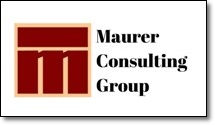‘Designing Strategies’ newsletter
November – December 2004 Volume I – Issue 2
Thankfully we have lived through the turmoil of our national election process. This was arguably the most divisive battle for leadership of the free world that we have experienced in our lifetime. One of the many hot issues throughout the campaign was that of businesses outsourcing American jobs to other countries. Interestingly enough, statistics show that advancements in technology are responsible for far more lost positions than job outsourcing and off-shoring. Knowing this bit of information, how can you Visualize, Analyze and Strategize to use it to your advantage in the coming years?
Visualize, Analyze and Strategize Your Way to Success
 Visualize this: Baby Boomers are beginning to leave the US workforce Note that back in the 1970’s, our workforce grew by a whopping 30%. By the 1990’s, that growth had slowed to 12%. It is forecast that in the next two decades we will be lucky to see a 2-3% workforce growth. The reasons for this slow growth are pretty basic. We are on the leading edge of retirement for the enormous Baby Boomer population. There simply will not be enough members of Generations X, Y and Z to take up the slack. The ability to fill open positions won’t be the only challenge coming with the the Baby Boomer Exodus. We will also be seeing a massive ‘brain drain’ of corporate intelligence as our Boomer employees depart. They will take decades of experiences and knowledge with them.
Visualize this: Baby Boomers are beginning to leave the US workforce Note that back in the 1970’s, our workforce grew by a whopping 30%. By the 1990’s, that growth had slowed to 12%. It is forecast that in the next two decades we will be lucky to see a 2-3% workforce growth. The reasons for this slow growth are pretty basic. We are on the leading edge of retirement for the enormous Baby Boomer population. There simply will not be enough members of Generations X, Y and Z to take up the slack. The ability to fill open positions won’t be the only challenge coming with the the Baby Boomer Exodus. We will also be seeing a massive ‘brain drain’ of corporate intelligence as our Boomer employees depart. They will take decades of experiences and knowledge with them.
Analyze The Situation: An important component of planning strategically for your firm is working
through a situational analysis. Do you remember that rogue, Fagin, in the musical “Oliver”? He sang about “reviewing the situation” as he considered his options. Should he turn away from his life as a villain for a more respectable way of life? He weighed in all of his options including marriage, an honest job, even owning his own business. This was his unique way of analyzing his strengths and weaknesses based on his past experiences and his ‘skills’. On the other hand, he was considering opportunities and threats coming at him from outside his present circumstances. Simply put, Fagin performed his own version of a situational analysis.
 Develop a Strategic Plan Of Attack: So, how do you plan to deal with the workforce shortage that is bearing down on us? How have you planned to capture your corporate intelligence before it is lost? How do you envision these factors impacting your operations over the next two decades? Have you given it any thought at all? The benefit of planning strategically is your ability to take a look at what is happening in the world. Then, you can consider how outside influences might impact your business. With this information in hand, you cab create a plan of attack to deal with it all. Don’t just sit around and wait to see what happens. Visualize, Analyze, and Strategize a plan for your future success now. Utilize this process to avoid being waylaid by numerous unforeseen obstacles.
Develop a Strategic Plan Of Attack: So, how do you plan to deal with the workforce shortage that is bearing down on us? How have you planned to capture your corporate intelligence before it is lost? How do you envision these factors impacting your operations over the next two decades? Have you given it any thought at all? The benefit of planning strategically is your ability to take a look at what is happening in the world. Then, you can consider how outside influences might impact your business. With this information in hand, you cab create a plan of attack to deal with it all. Don’t just sit around and wait to see what happens. Visualize, Analyze, and Strategize a plan for your future success now. Utilize this process to avoid being waylaid by numerous unforeseen obstacles.
VISUALIZE, ANALYZE AND STRATEGIZE
Your Way to Success!
Know Where You’re Going…
“If you don’t know where you’re going, you’ll end up somewhere else.” Yogi Berra
If you don’t think that you can predict the future without a crystal ball, think again. Taking time to visualize, analyze and strategize will give you more control of the future and your success than you might imagine. Visualize your company the way it exists today. Analyze your current situation, strengths and weaknesses to assess where changes for improvement need to be made. Strategize approaches you can take to move your company forward on a direct path to growth and success.
 At 17 component plants, divisions of the 84 Lumber Company, employees have begun participating in mandated Spanish classes. They have been hearing about the Browning of America for a number of years. Statistics show a significant and steady growth in the number of Hispanics entering the American workforce. About 40% of their current employees across the nation are Hispanic. A strategy was developed to help their English-speaking employees prepare for better communication with Spanish speaking employees and vice versa. 84 Lumber company now offers both Spanish and English as a Second Language classes free to employees.
At 17 component plants, divisions of the 84 Lumber Company, employees have begun participating in mandated Spanish classes. They have been hearing about the Browning of America for a number of years. Statistics show a significant and steady growth in the number of Hispanics entering the American workforce. About 40% of their current employees across the nation are Hispanic. A strategy was developed to help their English-speaking employees prepare for better communication with Spanish speaking employees and vice versa. 84 Lumber company now offers both Spanish and English as a Second Language classes free to employees.
Their strategy is not only to help today’s employees communicate better, but to give them skills to help
them attain promotions in the future. They visualize today’s employees as tomorrow’s bi-lingual leaders.
Classes are free for employees at both plant employee and management levels. Participants meet two hours a week for 10 weeks. The curriculum focuses on workers in the construction industry and the vocabulary they need to communicate in their specific business. 84 Lumber is controlling its future.






